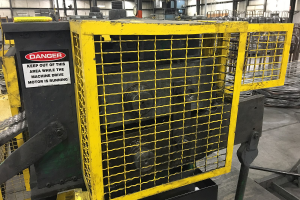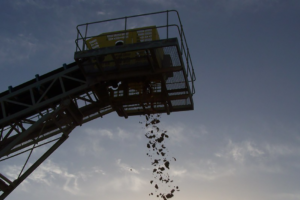I2P2 may be next big battle in struggle over OSHA enforcement push
While OSHA readies itself for a fight over its Fiscal 2012 budget, another big battle is looming over a proposal that OSHA administrator David Michaels views as the centerpiece of his campaign to exert more enforcement pressure on industry.
That proposal is the Injury and Illness Prevention Program, which has become known as I2P2.
On the surface it sounds like a good idea – require all companies in OSHA’s jurisdiction to have a safety program. If that was as far as it went, I would be all for it. But OSHA is going several steps further, by laying down specific requirements that businesses would have to meet in these I2P2 programs. That is a bad idea, simply because business environments vary so much.
U.S. Chamber concerned about I2P2
Business organizations like the U.S. Chamber of Commerce and the National Association of Manufacturers are concerned about the impact of I2P2.
“This would be the most sweeping regulation that OSHA has ever put out,” Marc Freedman, the Chamber’s executive director of labor law policy, said in an article in The Hill newspaper.
Freedman believes the rule could require employers to identify all hazards in the workplace, even ones not already specifically covered by OSHA.
“There is one school of thought that they would not have to issue another regulation ever again,” Freedman said.
Freedman believes OSHA will use the I2P2 program as a backdoor way to put an ergonomics standard into effect. A proposed ergonomics standard was rejected 10 years ago under the Congressional Review Act and as a result, OSHA cannot reissue a regulation similar to the voided standard.
“Not only is this similar to the ergo rule, this will be how this OSHA does ergonomics,” Freedman said. “This is their ergo rule in style and substance.”
OSHA’s Michaels sees it differently
However, in the same article in The Hill, OSHA’s Michaels said that no new health and safety standards would be developed under I2P2.
“It is intended to help employers develop a systematic plan to find and fix workplace hazards that are currently covered under OSHA standards or that are currently covered under the General Duty Clause,” Michaels said.
Michaels said I2P2 is needed because OSHA does not have the manpower to inspect every workplace.
“It would take over 100 years for OSHA to visit every workplace under its jurisdiction,” Michaels said. “OSHA believes that workers will be better protected if each employer has a proactive plan to find and fix hazards in their workplaces so that workers don’t get hurt.”
The lobbying effort 10 years ago over the ergonomics standard was huge, and if that is any indicator you may be hearing a lot more about I2P2 from Washington in coming months.
To keep up with the latest news about increased OSHA enforcement, subscribe to this blog and have it sent automatically to your Reader or email box.



2 Comments
It’s complicated, creating a set of guidelines that all businesses must adhere to. There are so many contributing factors in one industry that another doesn’t have to worry about, so where is the line drawn? What’s a reasonable safety expectation for one company might actually hinder the business of another, simply because of the industry.
How much more regulation are the busineses in this country going to be subjected to? Is there any reason at all a reasonable thinking person would go into business in this country and try and survive the tough economy and pay all the overhead and taxes only to support Osha who is in business not to help employers in any way but to collect fines. What other agency is encouraged to fine employers for not only what does happen but more importantly what may happen. Writing citations for things that may present a hazard in the workplace is like a policeman giving a ticket to a guy in a red corvette because it is capable of going fast. Employers a guily no matter what! We have to vote this administration out of office as soon as possible before all business is conducted overseas!!!